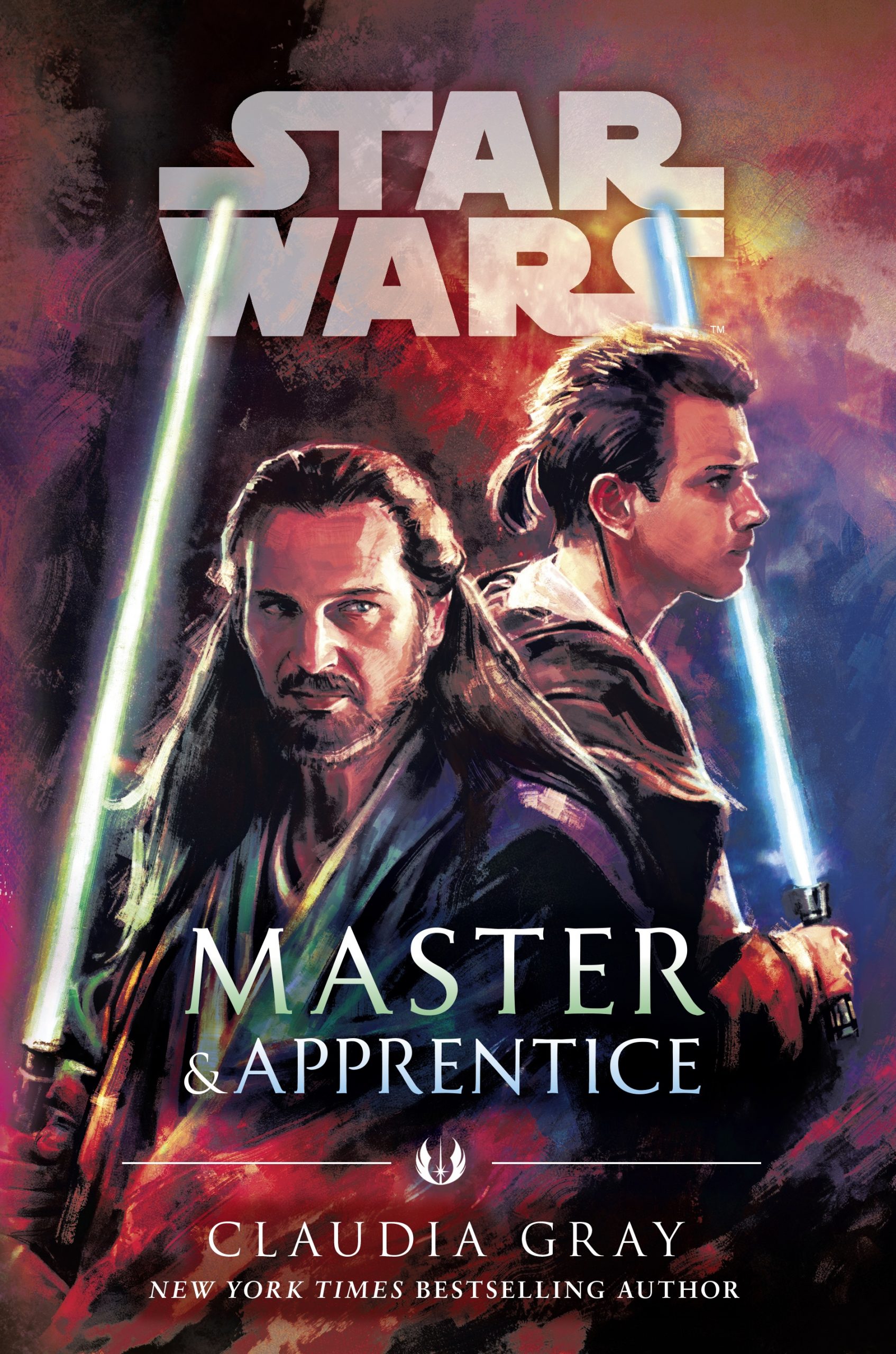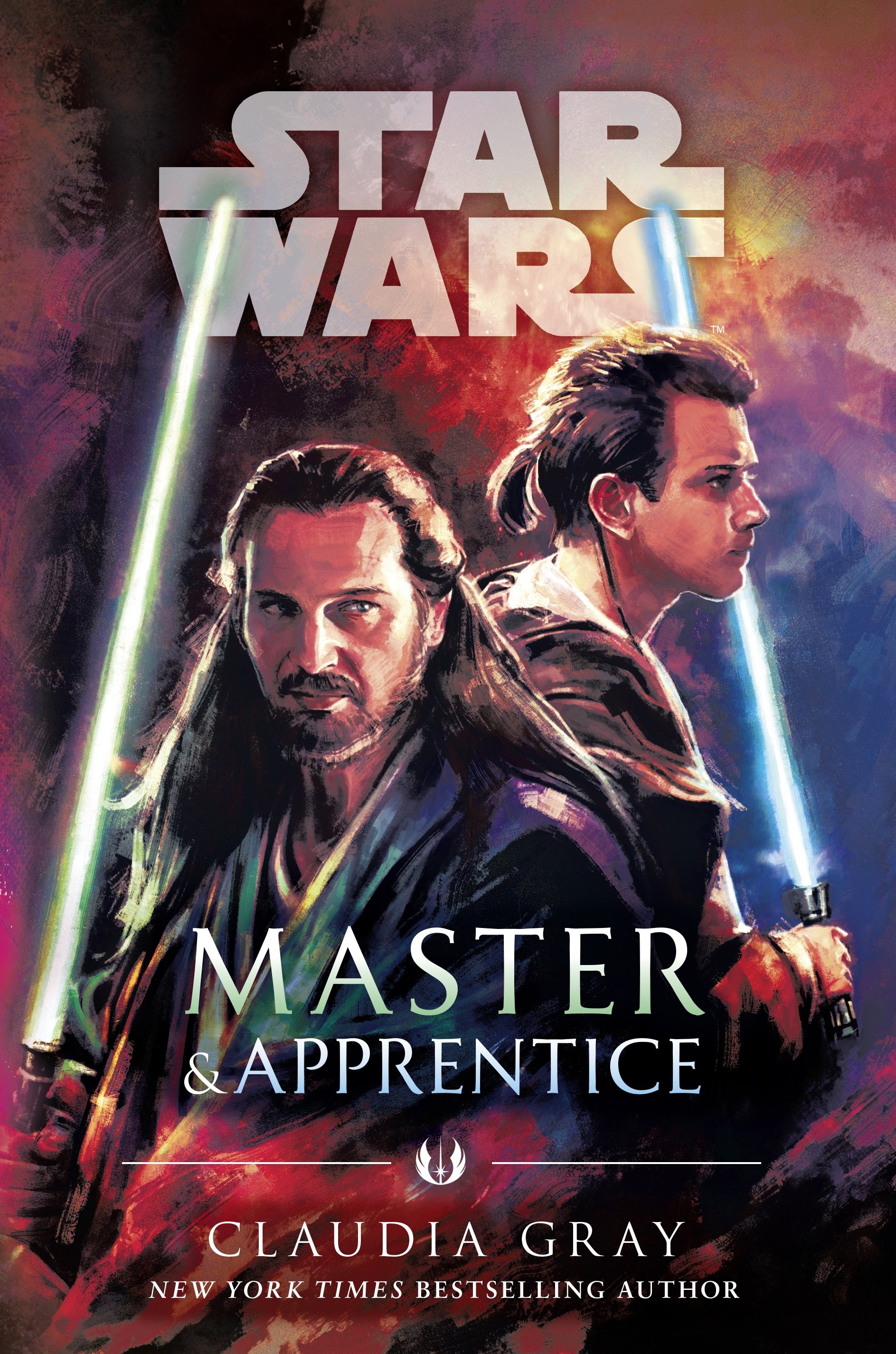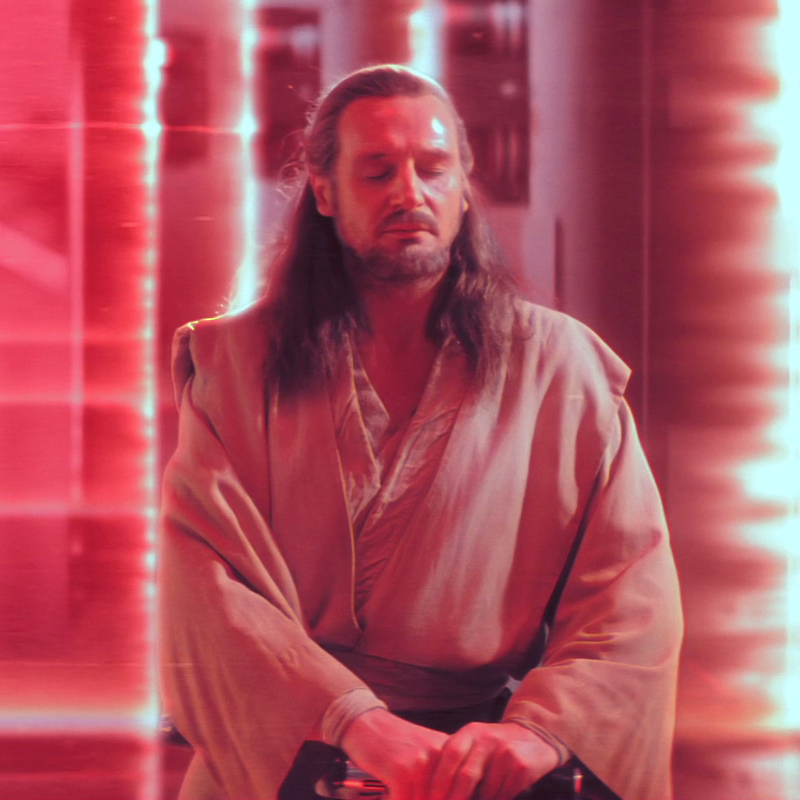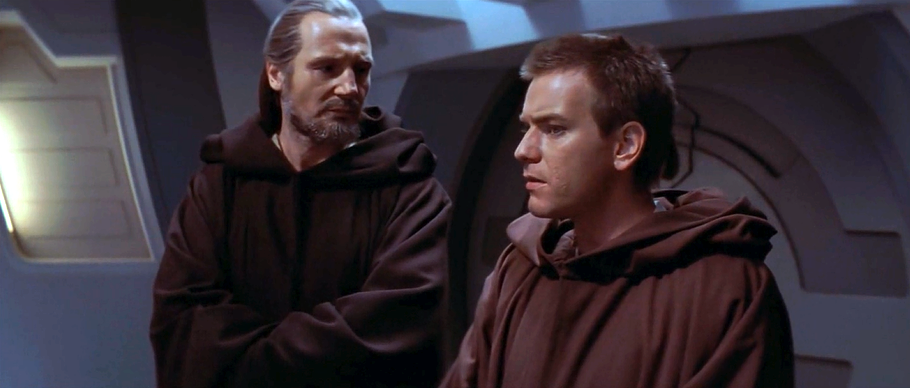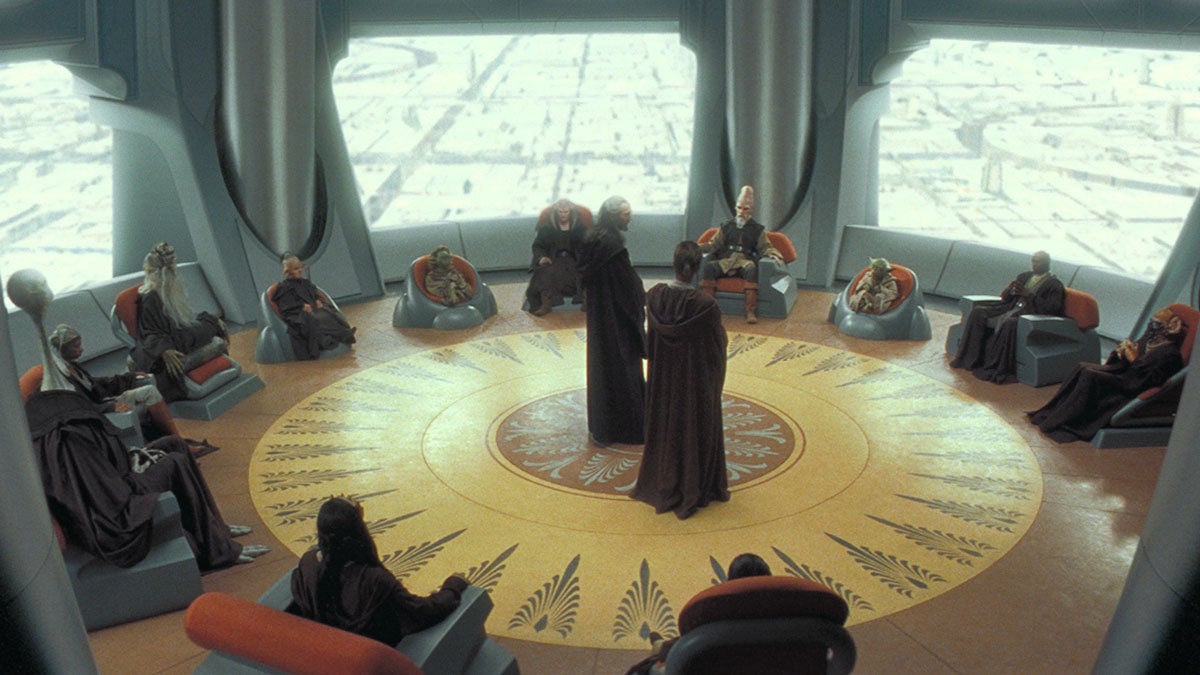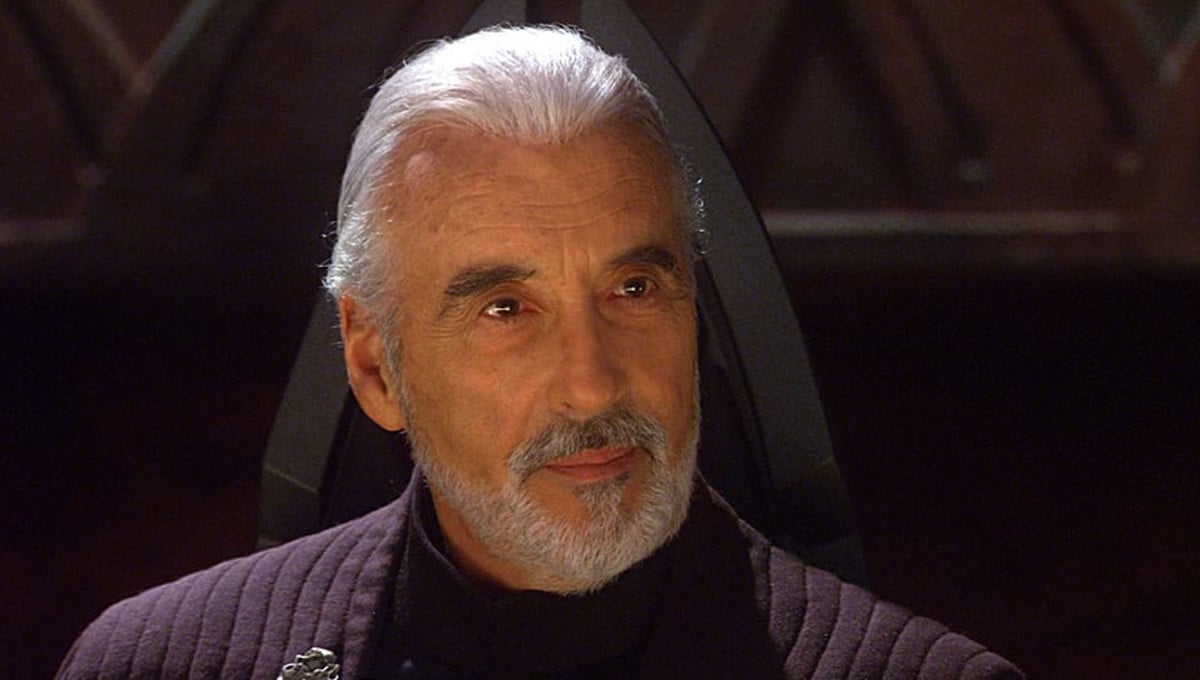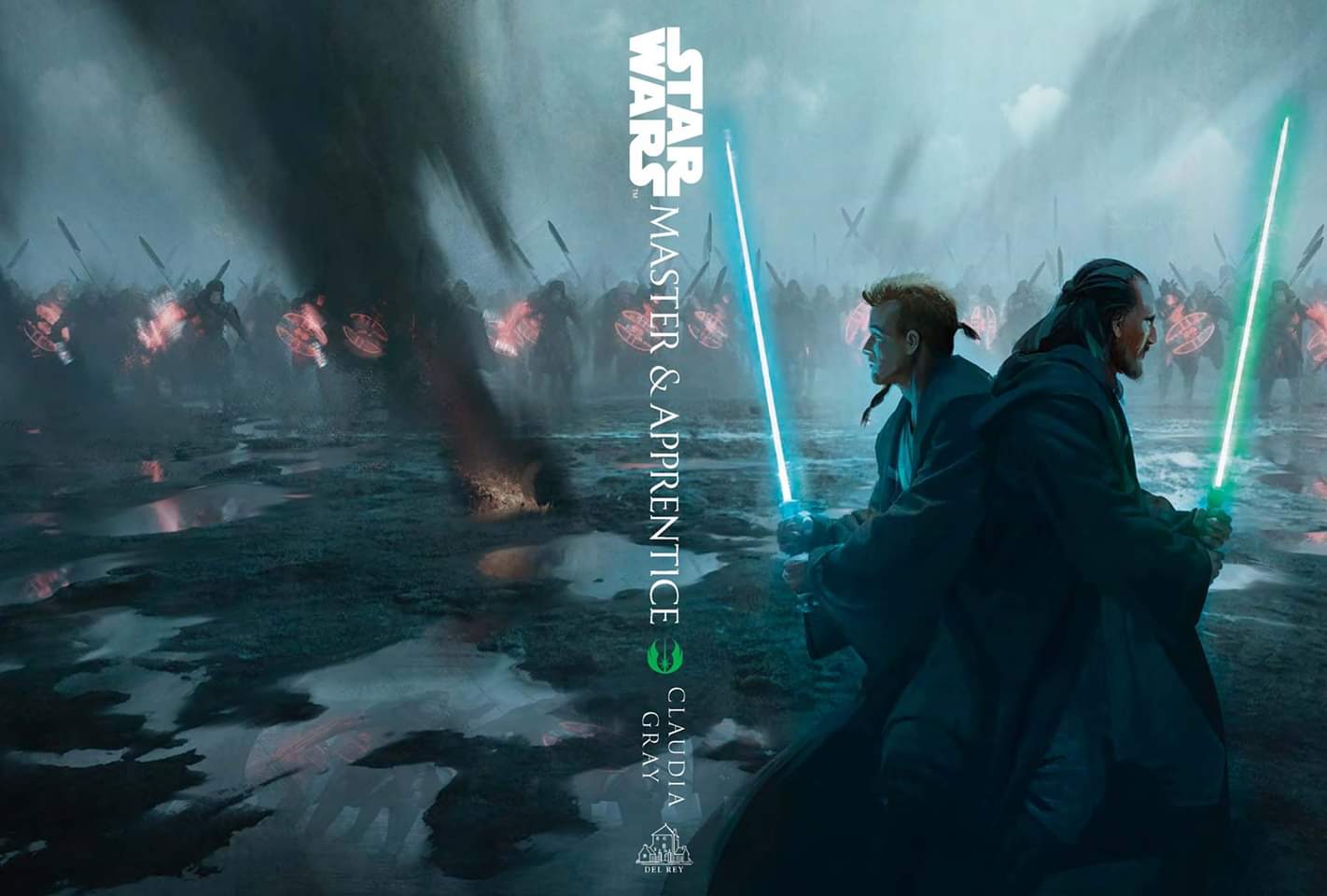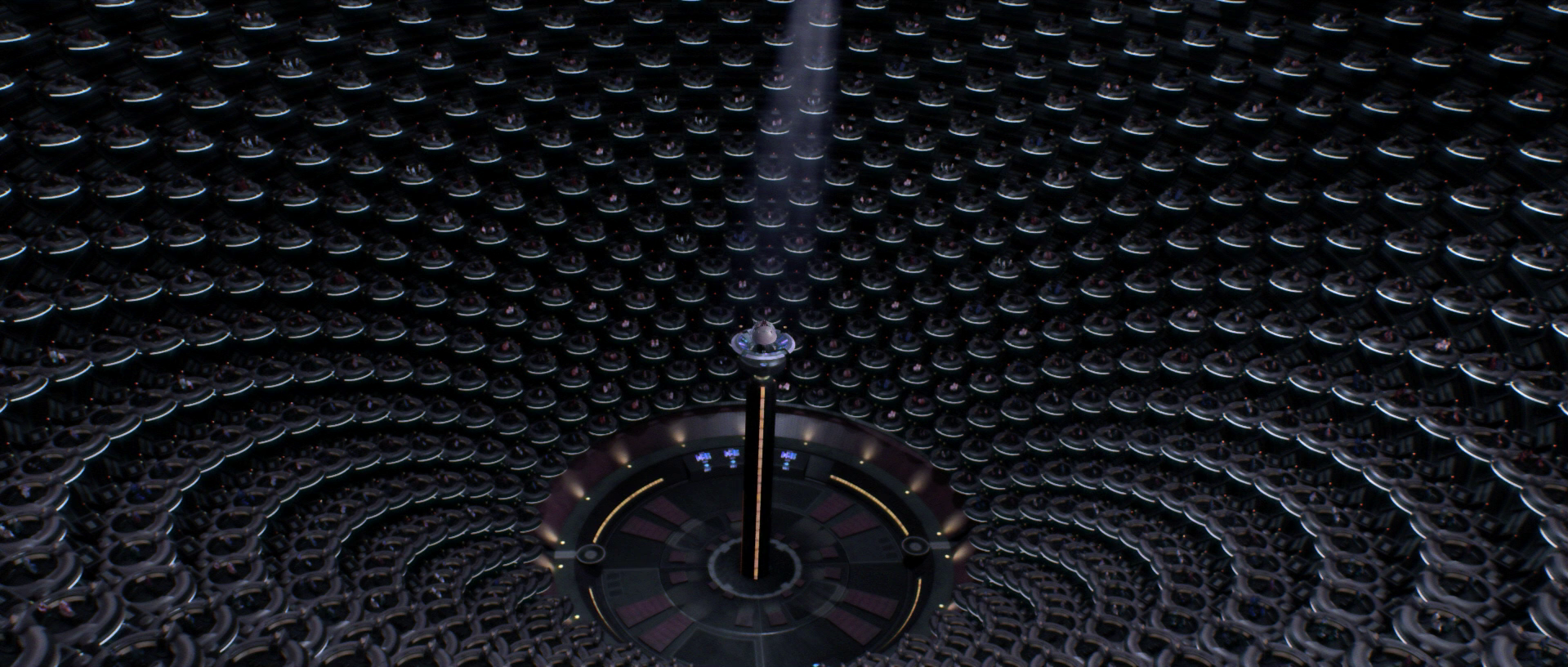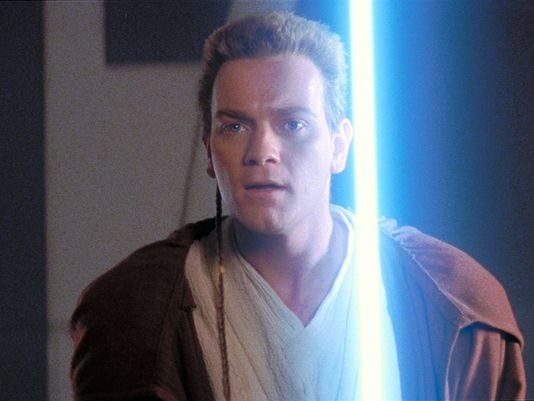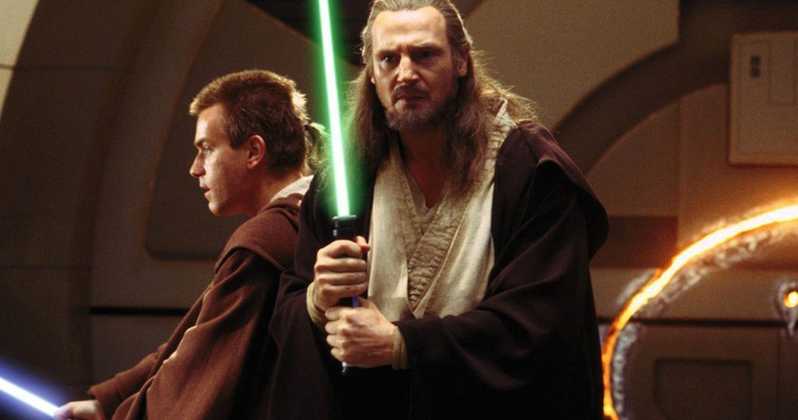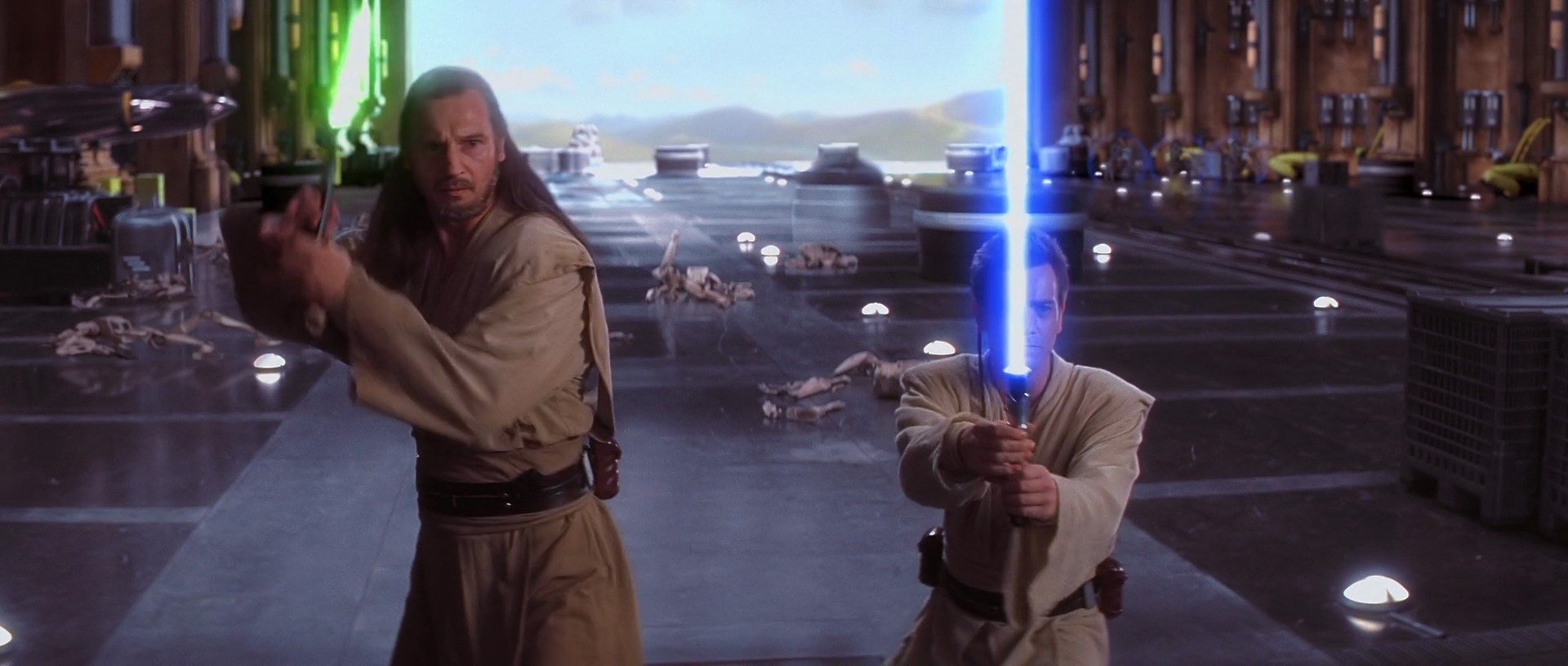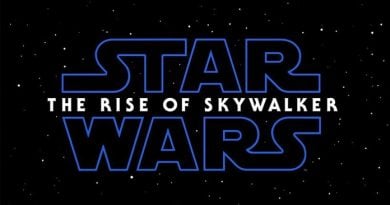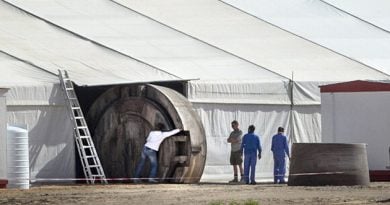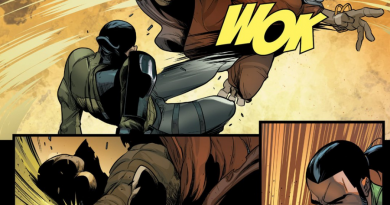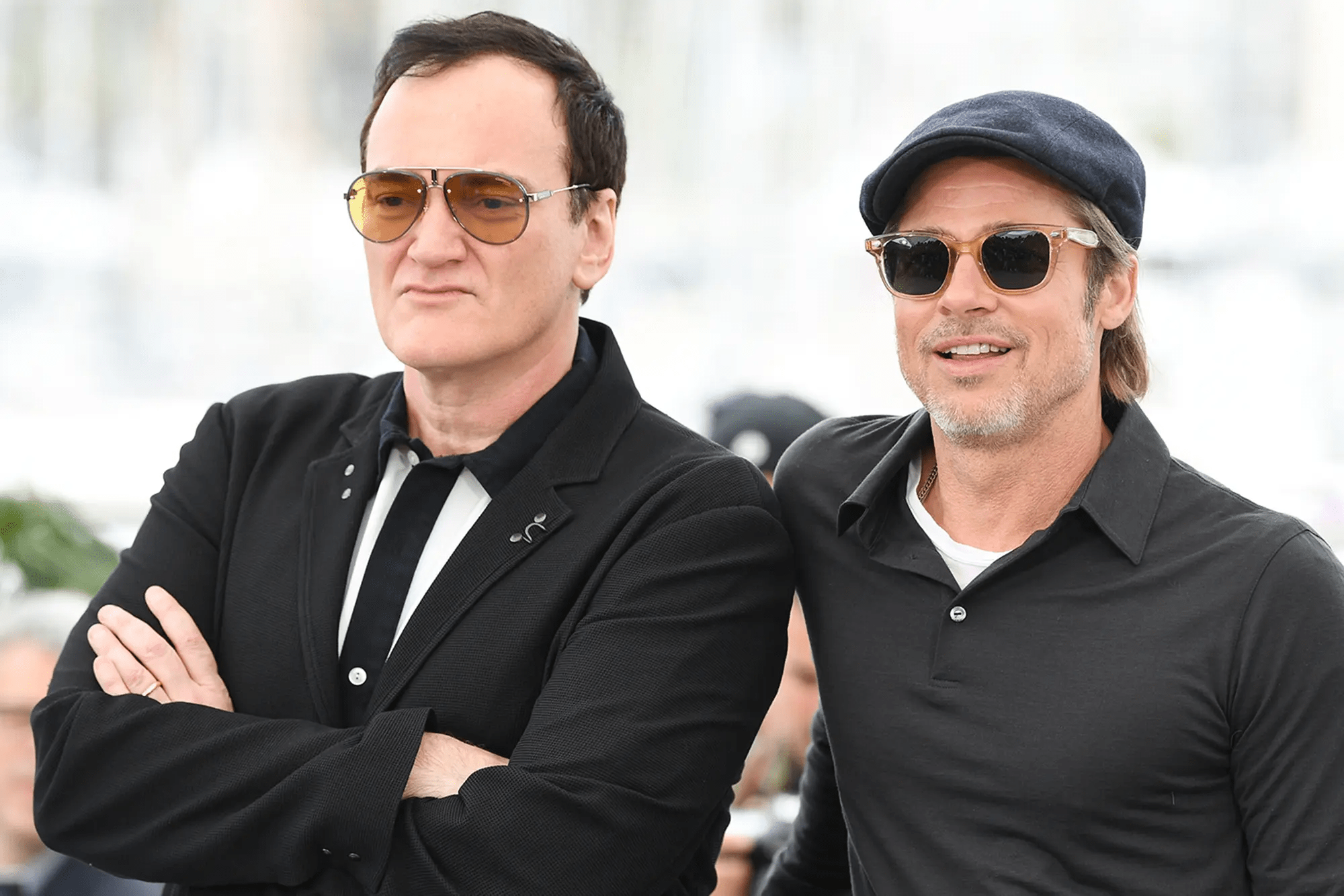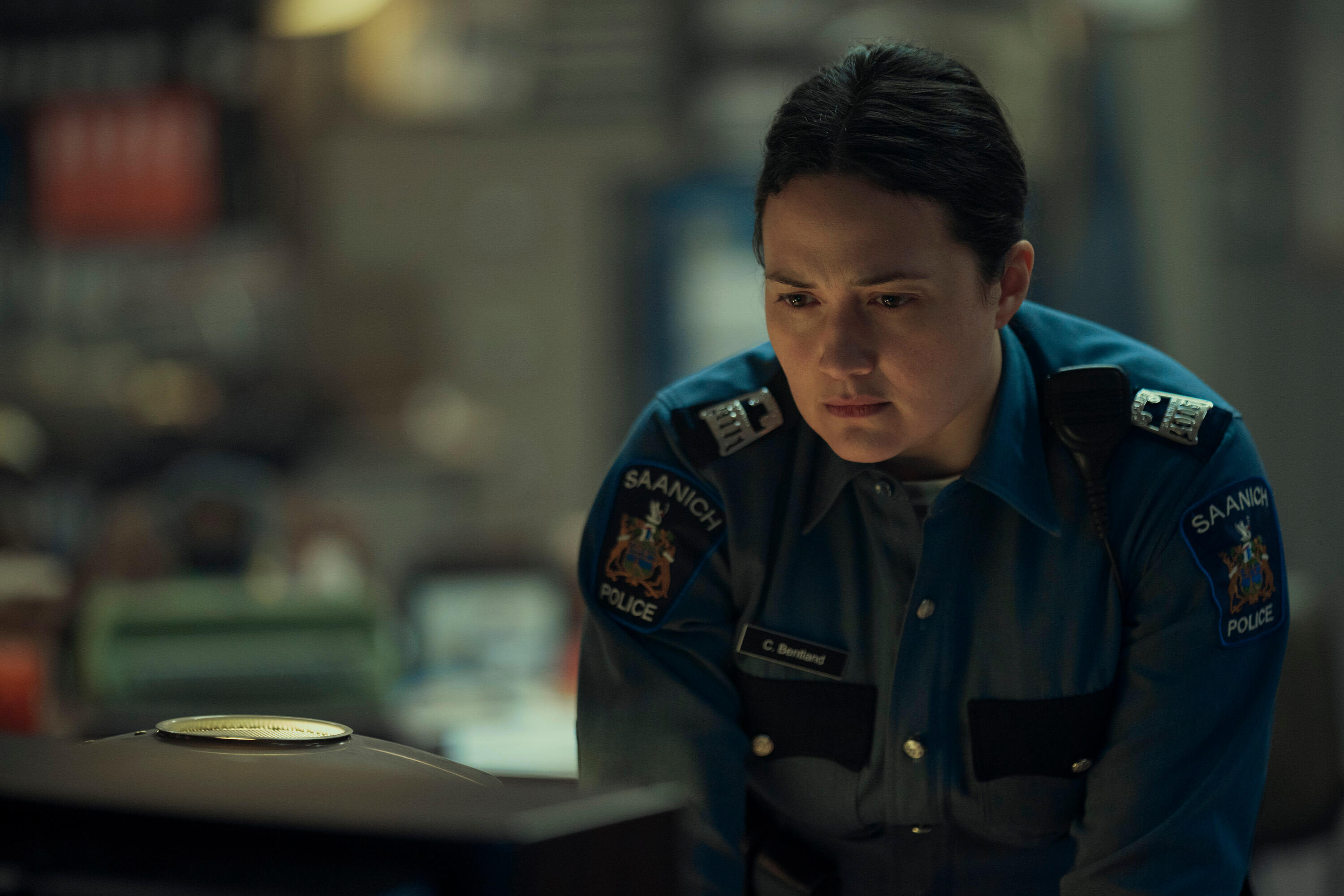Spoiler Review – The Fragility of the Jedi Gives Strength In Claudia Gray’s Master & Apprentice
In 1999, George Lucas pulled back the curtain and for the first time, we saw the golden age of the Jedi. Before The Phantom Menace, we had no idea what that would look like. Our first demonstration at the hands of seasoned veteran Qui-Gon Jinn and his capable Padawan, Obi-Wan Kenobi, exuded nothing but strength and confidence. The brave Jedi Knights dove head first into a conflict, taking on an entire ship filled with battle droids and leaving none of us less than thrilled at what Jedi abilities looked like on the silver screen. Claudia Gray’s Master & Apprentice gives us an equally revealing look into the golden age of the Jedi, with our same two conduits to the Force, only at a very different point in their relationship and individual development. “Balance” in Star Wars often seems to put forward the idea of fragility all Jedi must exist within as they navigate their way through the universe, trying to do right by the vague and mystical energy they’ve barely tapped into. Master & Apprentice tells a story that demonstrates that fragility but shows how layered it is in the psyche of each Jedi.
What we know of the Jedi Order is still evolving, even as The Rise of Skywalker quickly approaches, concluding what we can assume is our first nine-part lesson on a significant point in what will be their ultimate history. In canon, we really haven’t had much content depicting how the Jedi Order functioned before the crisis in the Republic became a full-scale war, ultimately consuming the Jedi into darkness and leaving their few surviving seeds of hope scattered in the wind. Claudia Gray has given us what I hope will be the first of many stories illustrating how challenging it could be to commit and exist within the Jedi Order. The human vulnerability of each member in its ranks starkly contrasts the stoic morality Jedi are expected to possess as a whole. They are expected to exist within a complicated, diverse galaxy as a monolith of justice and decency, but the struggle to maintain that code within each individual is where the cracks potentially appear. An order, moral and dogmatic, is portrayed to have reached its crescendo within the virtuously rotting Republic it is supposed to protect. The reader certainly sees flashes of the brilliance one would expect in the golden age of the Jedi, but you can also see the trouble the Jedi are headed for and how the Sith no doubt saw this era as the perfect time to strike. The Jedi Order became an anachronism as the corruption of the Republic spread like a silent virus whose symptoms its citizens and protectors ignored until it was too late. That’s not to say the Jedi were complacent or ineffective – Master & Apprentice tells a story that shows how badly the Jedi are needed in this era of the galaxy.
Qui-Gon Jinn is certainly the star of Master & Apprentice. His character is not much different on the surface than the veteran Jedi we met in The Phantom Menace. However, Qui-Gon Jinn is a labyrinthine combination of uncertainty and faith, constantly questioning whether he is the best Jedi and most importantly, the best teacher, he can be. Liam Neeson’s superb performance in The Phantom Menace conveyed a quiet conflict but reading it in Gray’s effective passages gives specificity that makes the death which caused his eventual absence from the Clone War and Anakin’s tutelage that much more tragic. Qui-Gon Jinn was as altruistic a Jedi as could be expected, sometimes frustrated with an Order tethered like an ineffective cog in the immorality machine of the Republic. I always assumed there was something pessimistic about Qui-Gon; rather, Gray’s writing implies the Jedi held healthy skepticism about the galaxy but ultimately believed in the good of the Force and the Jedi’s ability to be a force for good. That benevolence didn’t come without an analytical eye looking to the past and possible future in the many prophecies of the Jedi.
A prophecy was the catalyst for the entire Skywalker saga so it seems appropriate Gray would examine the tense relationship Jedi had with them. Being “present in the moment” is a mantra repeated in canon and implied to be a core Jedi discipline, which is why prophecies seem to fly in the face of this iteration of the Jedi Order. The Jedi Qui-Gon Jinn’s predisposition for the Chosen One prophecy is explained here and it comes from his master, Dooku. Dooku makes appearances in Master & Apprentice, but those appearances are nothing compared to how his training looms over so many things Qui-Gon does. In this story, Dooku has already left the order to help with the governance of his homeworld Serreno, but those who were closest to the powerful Jedi Master suspect there is more to his departure than allegiance to his homeworld and family dynasty. Where Dooku studied prophecies for a purpose that eventually became much darker, his fascination with what they could predict and mean was imparted not only onto Qui-Gon Jinn. Dooku had an apprentice before Qui-Gon, a character I suspect fans will be screaming for more of once they finish this novel – Rael Averross (we’ll get to him in a second). However dubious most Jedi regard prophecies, Dooku left an indelible curiosity within Qui-Gon, which is never quite sated, as the Jedi describes looking into the distant past of galactic history to examine if some may have already come to fruition but suspects many have yet to pass.
Before we get too deep into Jedi mysticism (that could be a whole series of articles), let’s discuss the story of Master & Apprentice, as it’s a well-contained tale that takes us on an adventure set against the thorny, political backdrop of a new planet called Pijal. The story opens on the Hutt controlled world of Teth. The Jedi have been dispatched to investigate missing shipments of agriculture the Hutts are suspected of stealing. After a brief standoff where Qui-Gon negotiates for Obi-Wan’s life while holding a blade to a Hutt crimelord’s throat, the Jedi return to Coruscant to report to the Jedi Council. Gray makes no illusions that the relationship between Qui-Gon and Obi-Wan is a smooth one at this point in time (canonically this takes place eight years prior to The Phantom Menace). It’s not as combative as the one Obi-Wan will later have with his own apprentice but there is an established wary undercurrent in the bond between the one he’s had with his master since day one of his apprenticeship. Both master and apprentice wonder if they are a good fit. Qui-Gon is concerned if he’s a capable teacher due to his restlessness with Jedi dogma and testy relationship with the council; while Obi-Wan can only find footing in ignoring his own rebellious tendencies by adhering to the strict Jedi guidelines, which feeds doubt.
Obi-Wan isn’t really sure what to think of his master. The Padawan is seventeen and on his fourth year of training under Qui-Gon’s instruction. When Kenobi came to Qui-Gon he had a rebellious reputation of his own and part of Yoda’s intent behind the match was to use Obi-Wan’s natural ambivalence about authority to push him toward the Jedi code. Because Qui-Gon weaves in and out of Jedi dogma it forces Obi-Wan to embrace it as his own way of finding his independence from his master. It’s a strange but brilliant method by Yoda, pairing to people together so similar they contrast each other by their inherent nature to rebel against the familiar and the status-quo, whether that’s their own dynamic or the way they view the Jedi Order. Obi-Wan isn’t the confident, cocky young person we meet in The Phantom Menace. He’s untested, unsure, and always questioning if he’s doing the right thing. Despite the highlighted defiant streaks in his persona, Obi-Wan very much wants to be a good Jedi, he’s just unsure if he’s worthy of his master’s lessons or if they are the right fit.
Upon their return to Coruscant, another shade of doubt in their delicate teacher/student relationship is added. Qui-Gon is offered a seat on the Jedi Council, which would ultimately leave Obi-Wan without a master and adrift as a Padawan. Qui-Gon agrees to consider the offer but decides to keep it from Obi-Wan, not wishing to add another element of uncertainty into the already confused Padawan. The main thing holding Qui-Gon back from accepting the seat are his own questions as to whether or not he’s been an effective teacher for Obi-Wan. Of that, Qui-Gon is unsure, which makes him wonder how well-deserved a seat on the council is and if he’s worthy of it. Qui-Gon’s introspection serves him well and underscores just how much he took the lessons of selflessness to heart. As strained as his relationship with the Jedi Council can appear, Qui-Gon is a true Jedi in the sense he considers everything around him first and foremost before his own needs. Qui-Gon is very much focused on the task at hand. For him, it’s ensuring his teachings contribute to the fulfillment of great potential he sees in Obi-Wan, not rushing off to accept one of the highest honors in the Jedi Order.
While Qui-Gon and Obi-Wan deal with the terrain of interpersonal relationships in the breadth of Jedi hierarchy, a situation on the other side of the galaxy unfolds with a Jedi who is neither concerned with the council or existing within the bounds of Jedi constraint. Meet Rael Averross, one-time apprentice to Dooku who has essentially been cast out of the Jedi Temple. Rael is about as close to being a disgraced Jedi without being called such. When we meet him he’s serving on as lord regent to fourteen-year-old Crown Princess Fanry, Serene Highness and heir to the throne of Pijal. Pijal is a planet that’s been hindered by lack of hyperspace lanes and has the potential to play a major role in facilitating economic prosperity to other regional worlds. That hinders on whether a new hyperspace lane can be established, something her lord regent has been grooming her to preside over, along with the help of a corporation called Czerka, who’ve also played a supporting role in Fanry’s upbringing. Averross not only serves as lord regent, essentially making him the ruler of Pijal, but also protector of the young princess. When a terrorist threat from the Pijal moon ramps up activities as a vote to ratify a treaty that will open the hyperspace lane and solidify the Czerka entrenchment on planetary resources, Rael realizes he’s going to need help on the diplomatic and security fronts. He reaches out to the Jedi Order, requesting Qui-Gon Jinn specifically.
Rael and Qui-Gon share the same master, Dooku. As mentioned earlier, Rael was Dooku’s apprentice before he took Qui-Gon as a student. Their relationship is tricky. Qui-Gon once admired Rael, who was almost like an older sibling or cool cousin that popped up in Qui-Gon’s Padawan days, offering encouragement and providing solace when the young man faced the solemn life of studying under Dooku. In present terms of the story, Rael is persona non grata for Jedi, after losing his Padawan because he failed to follow protocols put in place to protect students. The tragedy of Rael’s apprentice, Nim Pianna, is that Rael himself was forced to take her life after her mind and body were hijacked by a slicer dart (which unleashes nano-bots into the body of its victims, taking control of all motor functions). The Council cleared him but the presence of Rael became a distraction in the Order, which is why he’s been essentially exiled from the Jedi Order. Qui-Gon views Rael as a failure when it comes to the trust a master and Padawan are supposed to have, so he’s reluctant when he hears he’ll be working with the old acquaintance.
If there’s a Han Solo character to be found in Master & Apprentice, look no further than Rael Averross. His years away from the Jedi Order have allowed whatever rebellious and independent tendencies he once suppressed to flourish. Readers will no doubt take notice of a very unorthodox scene, not only for Star Wars but for Jedi: Rael Averross has sex. Rael is not only sexually active, but he also embraces sexuality as a natural inclination Jedi should not ignore, as long as it doesn’t lead to love. He seems to imply this is an unspoken aspect of the Jedi and scoffs when Qui-Gon judges him (it’s a great exchange). There’s no real disdain expressed for the Jedi, but Rael has dedicated himself solely to the well being of Crown Princess Fanry. Also, he’s in a very unique position as the ruler of Pijal, one that makes Qui-Gon especially skeptical of him. He’s not all sex jokes and smiles, as the Jedi is haunted by the death of his Padawan. Not because he was essentially exiled from the Jedi because of her death but because he admits he loved her as family. Rael doesn’t deny the Jedi feel love for their Padawans and each other. He’s the most emotionally honest Jedi I’ve encountered in the canon.
Upon Qui-Gon’s arrival, Rael notices his Jedi comrade is withdrawn from their familial bond and keeps things very formal. The dynamic between them leaves both Jedi unsure if they have an ally as events on Pijal unfold, but Gray uses flashbacks to illustrate the unique history between them. As Qui-Gon delved deeper into studying Jedi prophecies he noticed the darkness starting to form in their common master Dooku. Dooku was initially hesitant to let Qui-Gon study the prophecies but agreed out of fear his padawan would do it regardless of his warnings. It’s interesting to speculate whether Dooku did this to control the trickle of knowledge to Qui-Gon while he searched for the dark powers himself or if he was still uncertain about them and trying to protect young Qui-Gon. The prophetic lessons were shared with Rael, as well. We learn through these same flashbacks that Qui-Gon actually saw Dooku cross the threshold of darkness, nearly killing a bounty hunter out of a retributive sense to protect his Padawan and confided that to Rael. Again, at this point, no one knows why Dooku left the order and both his former students are reluctant to reach out to their former master. Yoda senses an ominous meaning behind the departure, but it is really more of a subplot in this story, and the history these two Jedi had with Dooku contributes more to the story. The history they share eventually forms a bedrock of support towards the end of the novel, as the conflict on Pijal threatens them both. In the end, Averross ends up being a friend and ally to both Qui-Gon and the Jedi.
Pijal is not a world without its problems. Hyperspace lanes can make or break a planet and the prosperity of Pijal has dwindled over time due to lacking one. While it should be a major hub of regional commerce, it remains stagnant while many other smaller worlds in the region suffer even more desperate plights. The Czerka Corporation has been a presence on Pijal and over the Crown Princess for some time. We learn their interest in this world is not a charitable one. The Czerka unapologetically use slave labor on their ships and in their mining facilities on Pijal’s moon. They are determined to gain dominance over what could be a massive economy by the creation of this hyperspace lane. First, they have to get a treaty signed, one which they’ve embedded several long-lasting concessions Pijal will make to them. Qui-Gon discovers this, as he’s been appointed by the Republic to ratify this treaty, but it’s not pointed out to him by his fellow Jedi or the Czerka Corporation – he learns of this from the accused terrorists from the moon of Pijal.
In typical Star Wars style, the villains of this story are elusive and controlled by a mysterious puppeteer. No, don’t expect any familiar cackles to show up, as Sheev Palpatine is nowhere to be found in Master & Apprentice. The trick Claudia Gray pulls off here is she keeps you guessing until the very end who might be behind the threats to the princess and Pijal. Qui-Gon and Obi-Wan encounter a squad of darkly clad soldiers, referred to as blackguards, with shield generator technology capable of withstanding and deflecting a lightsaber attack. They mysteriously show up and give the two Jedi a fight, nearly killing Obi-Wan in one of their encounters. They are suspected to be affiliated with a group only referred to as the Opposition. Members of a politically subversive theatrical group make up the Opposition and are prime suspects throughout most of the story until Qui-Gon and Obi-Wan are rescued by their leader, Halin Azucca. She claims they have never attacked Pijal and are only concerned with the controlling interest Rael is about to help the Crown Princess hand over to the Czerka Corporation. Qui-Gon trusts their sincerity, even when Rael Averross doesn’t back down from the conclusion they are terrorists. Qui-Gon’s trust in Azucca leads him to oppose ratifying the treaty but it’s not the only factor. Czercka doesn’t just deal in hyperspace lanes, they also deal in slavery.
The Republic has rejected slavery, but that general declaration is in need of specificity. This topic leads us to two more characters who show up in Master & Apprentice: Rahara Wick and Pax Maripher. The duo are amateur jewel thieves and what’s brought them to Pijal is the discovery of a gem, kohlen, almost identical to kyber, they even call it fool’s kyber at one point. We learn Rahara is an escaped slave still technically owned by Czerka. Pax has his own unique story, being raised on a derelict ship filled with protocol droids for most of his life made him a social outcast when he tried to enter society from that upbringing. They’ve been hired by Qui-Gon and Obi-Wan as the Jedi attempt discretion. Rahara is scarred from her days as a slave, both mentally and physically. Later in the story, when she’s recaptured by an enforcer droid by Czerka, she lists off every fate she’d hoped prefer take her life rather than be put back into bondage. Between her personal experience and the outrage Halin Azucca displays over the laborious population of Pijal’s moon being disenfranchised, Qui-Gon sees a great deal of oppression surrounding the treaty Czerka and Rael are quick to have the Crown Princess sign.
While Jedi are expected to uphold just morals, they are also expected to reconcile injustices for the greater good. When Qui-Gon objects to the treaty, Yoda reminds him that the jurisdiction of the Republic does not extend to the legal loophole slavery Czerka employs. The good that will come from the treaty the Czerka sign will supposedly outweigh the injustice of the many beings they have enslaved aboard their vessel. To Qui-Gon, there’s no equivalency between necessary slavery (evil) and greater good, as well as the disenfranchisement of the population on Pijal’s moon the Opposition is fighting for, so he informs the princess and Rael he will not recognize the treaty as Republic representative, which makes it impossible for the planet and corporation to ratify.
Here’s where things get interesting for the master and the apprentice. Obi-Wan sees that Qui-Gon is going to violate their mandate and go against the treaty. He confers with the Jedi Council and eventually they make him the Republic representative. Obi-Wan has assurances the treaty will be adjusted to not grant the Czerka Corporation permanent dominance on Pijal, but Qui-Gon tells him he’s naive and has only made things more complicated with his interference. Obi-Wan is plagued with uncertainty throughout this story. A big part of that is his assumption Qui-Gon will accept the council seat and his training under the Jedi will end. The feeling of being in limbo clouds so much of what Obi-Wan does in this book but when he chooses to go against his master he feels awful about it but knows he’s doing what the Jedi Order and the Republic would want him to.
Qui-Gon has been struggling with a vision he’s had of the Crown Princess’ coronation. A dream comes to him where the coronation is in progress but an unknown attacker appears and Qui-Gon is certain this person is either a threat to the princess or Obi-Wan. The vision is so strong and frequent Qui-Gon is certain its through the Force. He only confides of it to Rael because it reminds him of the prophecies Dooku used to make them study. This concern for Obi-Wan’s safety is something Qui-Gon does not share with the Jedi, but it’s an expression of his love and stewardship of Obi-Wan. As the tensions leading up to the coronation grow, Qui-Gon senses the blackguards will strike again and this time his vision will come true.
The vision comes to fruition and the one behind everything is the newly anointed Queen Fanry. The fourteen-year-old queen knew she was being stifled by Rael and the Czerka Corporation, but she went along with it and plotted behind them to take back her planet. Interestingly enough, some of the funds she used to procure her blackguards were laundered by the Banking Clan and I don’t doubt a certain Sith Lord was aware of all this happening. Fanry rejects the Rebublic and the Czerka, declaring her people will remain firm in their isolationist roots. She references other planets like Naboo and Alderaan, who allow their monarchs more of a chance to rule instead of being groomed into whatever the galaxy wants them to be. Fanry has a point, but she’s making a power grab of her own, as her planet is technically a democracy and she’s essentially trying to seize power. This moment also teaches Qui-Gon prophecies can be misread.
When she declares she’ll destroy the Czerka ship in orbit, which carries many slaves. Qui-Gon, Rael, Obi-Wan, and Pax know they need to intervene. Rahara has been recaptured by Czerka and Qui-Gon feels a tremendous amount of guilt for it. She wouldn’t have been taken by the Czerka and forced back into slavery if it weren’t for him requesting she and Pax pilot them around Pijal’s moon. Qui-Gon is especially fired up to go to her rescue and pleads with the queen to stop her attack. Eventually, one of her close attendants who helped her plan all of this turns against her, putting a blaster to the queen’s head and ordering her to stand down. Obi-Wan manages to liberate all of the slaves by crashing a ship onto the bridge of the Czerka ship, declaring as a representative of the Republic, due to an obscure law, he can declare the slaves prisoners or casualties of a political upheaval free as an observer of the Republic. Rahara and the rest of the slaves are free.
At the end of the novel we witness a few more pivotal moments. The first, Rael finally gets in touch with Dooku, who shares with his former apprentice that he’s discovered a great power he’d like to share with him. Rael tells his master he’s returning to the Jedi Temple and that he’s chosen the light, then cuts the connection to Dooku. You can bet we will be hearing from Rael again and I have a bad feeling he’s at the top of Dooku’s enemies list. Qui-Gon turns down the offer to join the council because he feels he can’t be a Jedi Master if he can’t complete Obi-Wan’s training. Qui-Gon cares deeply about making Obi-Wan the best Jedi he can and it’s a good thing to, because this bright-eyed Padawan has a helluva a life to live after he’s gone. There’s a small part of me that wants to believe Qui-Gon knew exactly that.
The story itself is pretty self-contained, but back to the prophecies. During a flashback to Qui-Gon’s time studying prophecies under Dooku, Gray gives us a few lines from one of them:
Only through sacrifice of many Jedi will the Order cleanse the sin done to the nameless.
The danger of the past is not past, but sleeps in an egg. When the egg cracks, it will threaten the galaxy entire.
When the Force itself sickens, past and future must split and combine.
A Chosen One shall come, born of no father, and through him will ultimate balance in the Force be restored.
There’s a lot of places this could go. The prophecies are not known for their specificity, but you can see why Qui-Gon was keyed up to believe someone with as much raw power as young Anakin could represent this. It’s a prophecy that’s never far from his mind. There’s also these:
When the righteous lose the light, evil once dead shall return.
And
She who will be born to darkness will give birth to darkness.
The first one strikes me as a wink-wink, nudge-nudge way of Gray suggesting Kylo Ren’s rise was foreseen to some degree. Of course, you could also say she’s referring to Palpatine’s return in The Rise of Skywalker (I have to admit it felt pretty good typing that) or even simply the rise of the Sith in the prequel trilogy. The second one could refer to Leia giving birth to Ben, as she was born when her father was in darkness. There’s a lot of circles one could run around with this and apply it across the saga. I do it as a fan, Qui-Gon did it as a studious Padawan and Jedi, trying to find the applicable story to see if the prophecy had come to pass. Qui-Gon never got his answer but I think we will.
Master & Apprentice is a treasure for Star Wars fans. Though this spoiler review touches on a lot of what happens in the book you really need to read it for yourself. I’m sure there are moments I forgot to touch on. Claudia Gray’s writing is superb and that shouldn’t be a surprise to Star Wars fans at all. Her catalogue of novels continues to grow and you can count this among the best of them. This will no doubt be used and referenced by many creators looking to contribute to the canon going forward. I’d love to get a whole series of these Master & Apprentice featuring different moments we haven’t seen onscreen. Anakin and Obi-Wan, set between The Phantom Menace and Attack of the Clones, or even Luke Skywalker and Ben Solo, set somewhere before the sequel trilogy. This book is incredibly satisfying but I’m still left wanting more adventures about Jedi Masters and their Padawans. Master & Apprentice has set the bar, now I want to see Claudia Gray raise it again. I’ve no doubt she will.
Fragility doesn’t imply strength. The Jedi are walking contradictions. They search for peace, enlightenment, and serenity in all beings and moments in the galaxy. Their duty is to the Force and the beings it binds together. They must walk the balance, otherwise their mission, their charge, can break into pieces and never be put back together. Jedi fail, as we’ve seen, but failure isn’t a shatter point. The abandonment of hope, principles, and good is when everything is broken. The Jedi walk with fragility, protect fragility, and embrace fragility. In that notion, they find strength in the contradiction while embracing the light. My favorite line in Master & Apprentice sums up the rich heroism of Star Wars:
We don’t choose the light because we want to win. We choose it because it is the light.
RATING: 9/10
Master & Apprentice is currently available at your local bookstore and online retailers.
Kyle Larson lives in Portland, Oregon. When he's not running trails, he's reading and writing.

